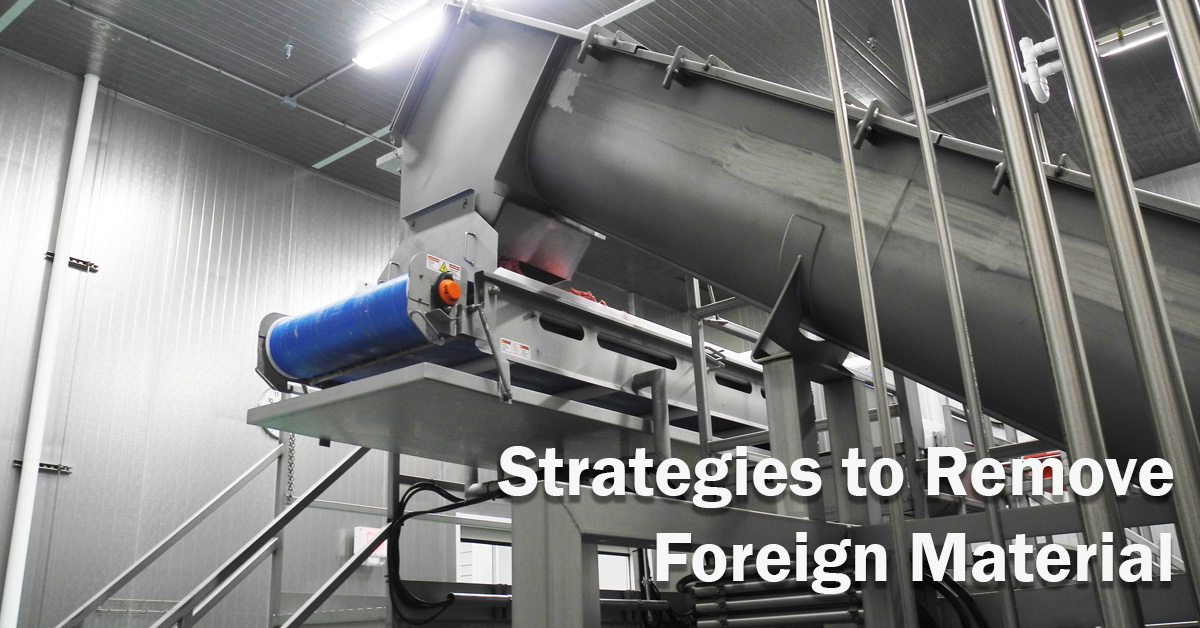
Large-volume automation in the meat processing industry brings a higher risk of foreign material contamination. Foreign material can include metal shavings and shards from grinders, mixers and dicers, wood and nails from pallets, and numerous other materials like plastics and glass.
The following are equipment options and proper maintenance practices that can help mitigate foreign material risk in food handling transfer areas:
- In areas where a tote dumper is used to transfer meat to secondary processing equipment, equipment manufacturers can offer a PRS (Pallet Retention System) that removes the pallet out of the food transfer zone.
- A drop belt conveyor can be included in system designs that provides repositioning of the meat product during conveyance to allow for visual inspection before the product is transported to downstream equipment.
- Magnetic grates can be integrated into food transfer areas on processing equipment.
- The best way to limit foreign material such as nuts, bolts, and metal shavings is to have a robust preventative maintenance program on all equipment. Machinery vibration can cause nuts and bolts to loosen over time. Wear points on machinery that are not aligned can produce loose metal. Brittle plastics such as seal holders, conveyor guards and plastic bearings can break down into small pieces and become difficult to detect. Proper construction of the equipment that withstands high-volume and high-speed production is equally important as regular maintenance audits to make sure the equipment is in good working order to help eliminate preventable foreign contamination.
